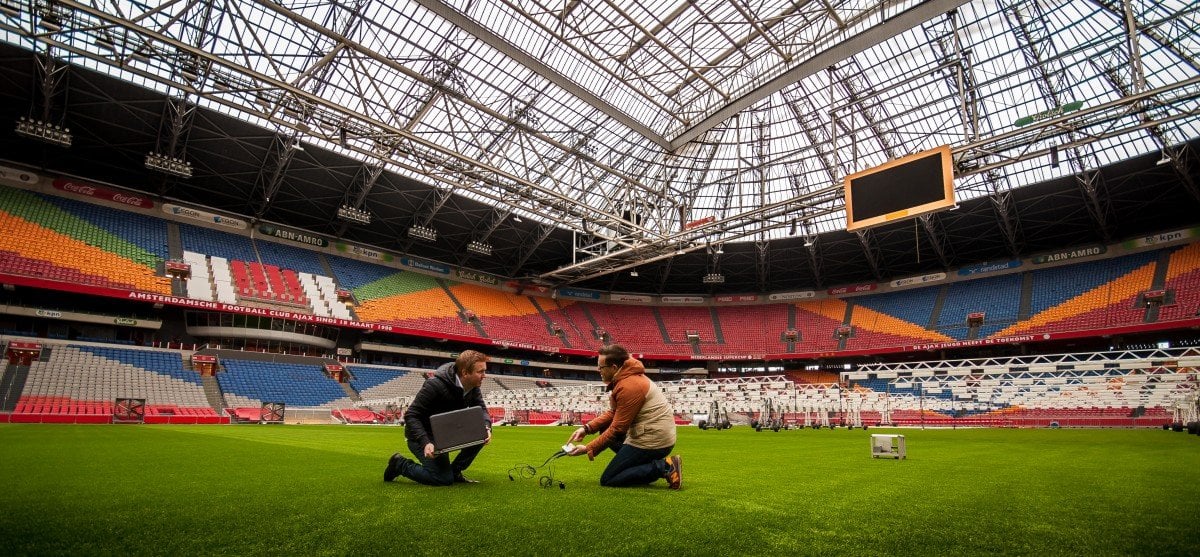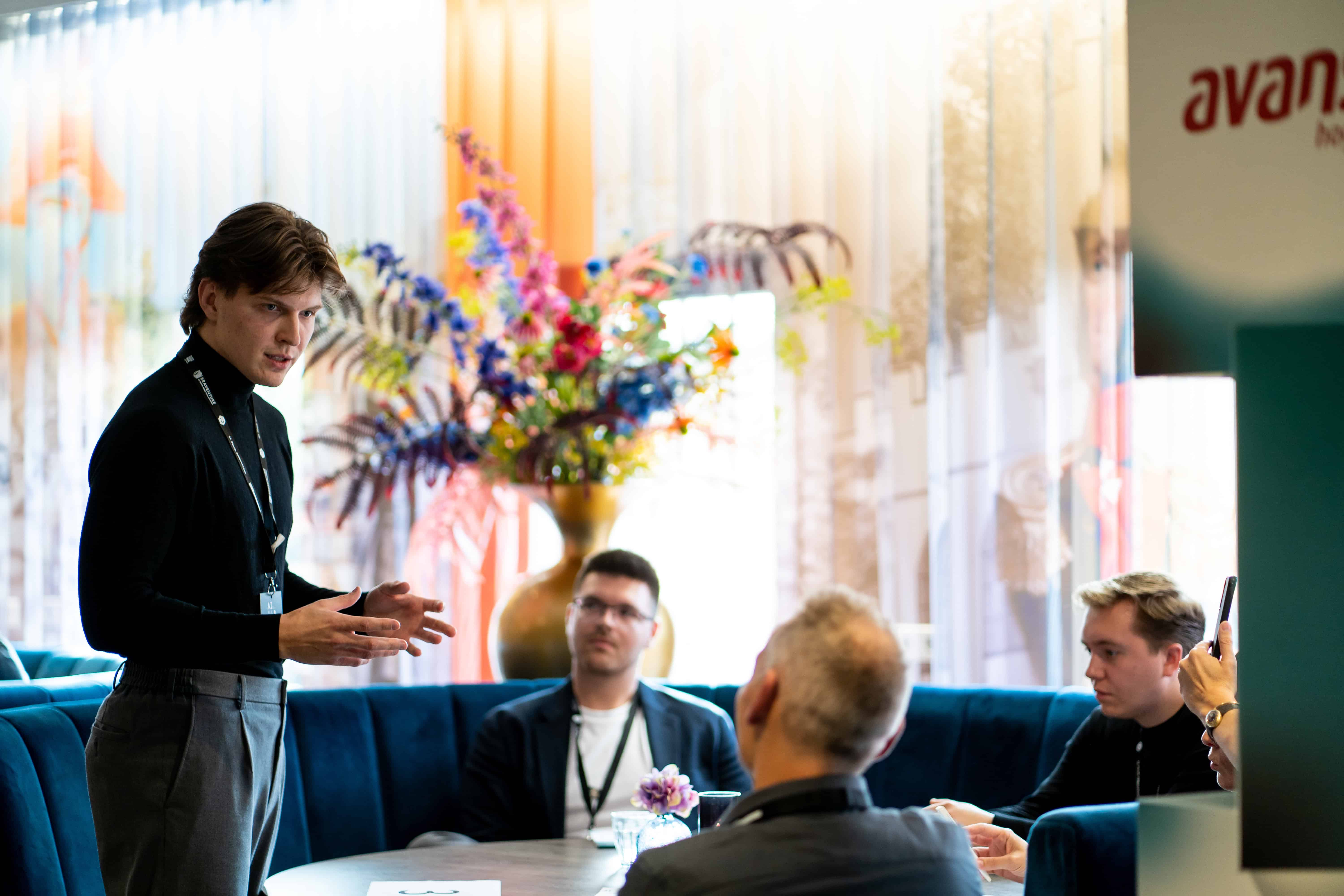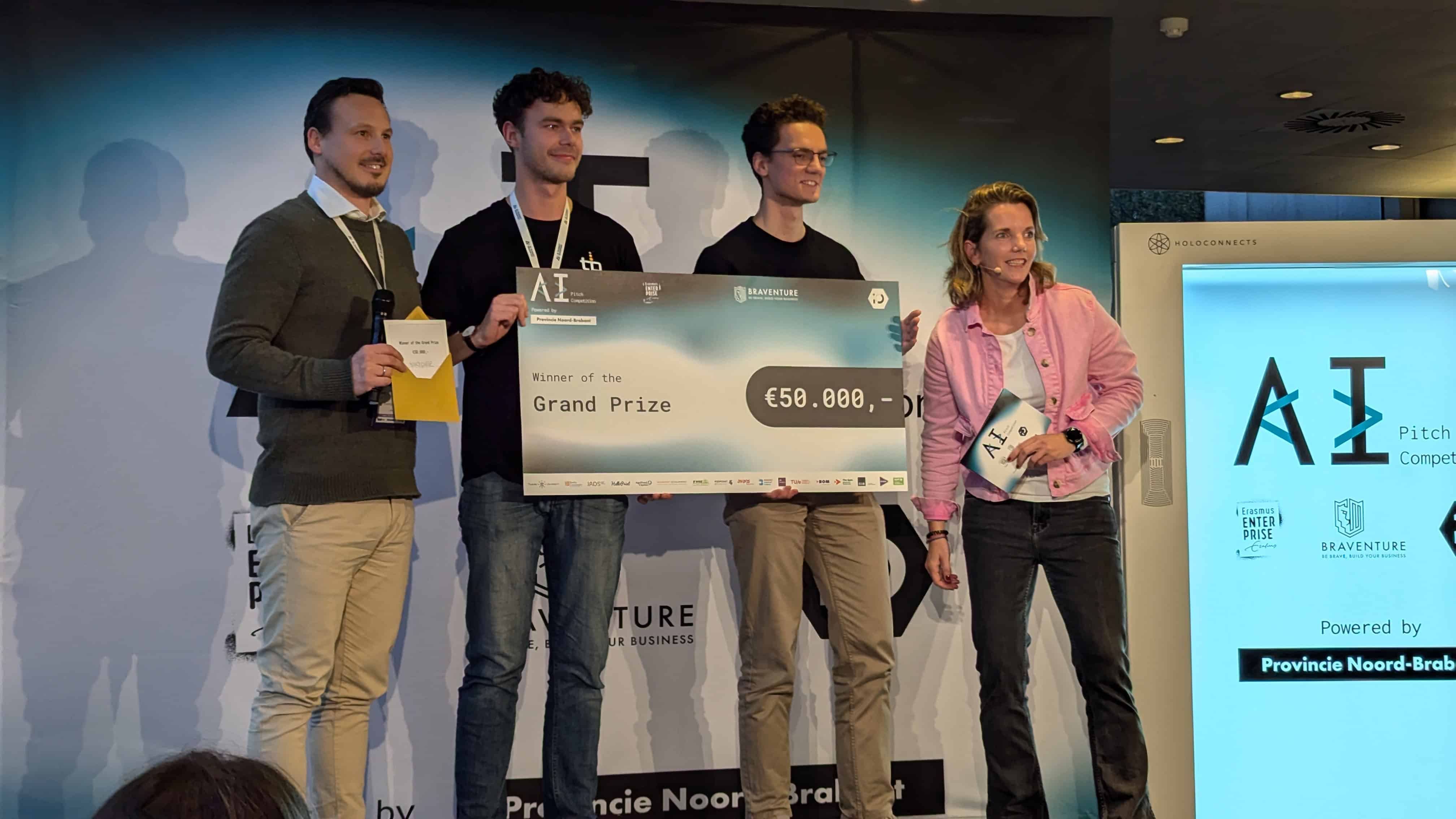
As the Dutch football competition is approaching its boiling point with both PSV and Ajax fighting for the championship, Eindhoven and Amsterdam are closer than ever to each other when it’s about football. It is partly thanks to an Eindhoven ‘data biologist’ that the pitch in the Johan Cruyff ArenA is as perfect as it can get. And that the turf – straight from Heythuysen in Central Limburg – only needs to be replaced once a year, instead of the original three times. Even if in the middle of the football season a gigantic show by U2 or the Amsterdam Dance Event passes by. The ArenA is more than just a football temple: it’s a venue for a wide variety of activities. Ajax is not the only tenant.
From his desk at the High Tech Campus, Joep van Cranenbroek can view the inside of the ArenA via a camera every minute of the day. Not that this is always necessary, because even without a camera, his dashboard shows exactly what the influences of sun, shade, rain, wind and many other factors are on each individual blade of grass in the ArenA. And on that basis, he can predict what the consequences will be in the coming period. With artificial light, rain or other nutrients, he can directly fill in the needs of the pitch. The result: better grass at lower costs. And it’s sustainable as well: never too much water, food or light is used.
Filled with sensors

No one sees it and no player can trip over it, but the ArenA’s field is full of sensors. At three different depths, they keep track of the quality of the grass and the soil. Van Cranenbroek has carefully positioned them – partly with the help of HAS graduates in Den Bosch – to form his eyes and ears on (and in) the pitch. In addition, four weather stations in the roof and one on the field monitor the growing climate. On the roof and on the field, other sensors record whether there is sufficient light on the grass. Each time the grass is cut, a scan is made of the turf to measure the activity of the plant, the number of blades of grass per surface area and where there are damaged spots.
The fact that Joep van Cranenbroek ended up in the ArenA and at Holland Innovative on the High Tech Campus is still a special story. Graduated as a biologist at the HAS University of Applied Sciences, his specialism was mainly in pesticides and pollinators for gardening and agriculture. “Gradually I became more and more interested in how plants communicate with insects. With their ‘secondary metabolites‘, plants make them smell good or bad, attracting or repelling the right insects. We, humans, turn it into cosmetics and food, but we usually do this by destroying the whole plant. To turn that around, I started working for Flora Fluids at the time. With our proof of principle, we were able to remove taxol from the yew without damaging the plant. That was really a great achievement. But as you can see with more startups, we didn’t succeed in scaling up the concept.”
Objective data from nature
When – or perhaps even because – Flora Fluids turned out to be a dead end, Van Cranenbroek joined Holland Innovative, a company on the High Tech Campus that offers training, coaching and specific projects focused on improving reliability and quality in business processes. “Holland Innovative had invested in Flora Fluids, so there was already a contact. But apart from that, it was rather bizarre, I’m really a strange duck in the woods here. They call me the data biologist, that says it all. What I am very good at is setting up measurement systems: using technology to get objective data from nature, but also objectively measuring what players think of a football pitch. The methodology I get from Holland Innovative is very well suited to capture and interpret plant and animal variables in a structured way.” No, Holland Innovative wasn’t looking for a biologist, just as Van Cranenbroek wouldn’t have thought of a job at that company if Flora Fluids hadn’t been there. And yet it ‘clicked’.
“You can collect a lot of data, that’s fun and nice, of course, but it’s only really useful if you can attach a value to it”

In the meantime, HAS also knocked at his door again: whether, based on the expertise that had already been built up, he felt for an advisory job for the ArenA. “Then, on behalf of HAS, I set up the first measuring systems there. But after the HAS assignment had ended, I just stuck there. I now advise on lighting and sensors, among other things, but I also continue to do the entire monitoring myself. With the methodical approach I have gained here at Holland Innovative and my knowledge in the field of biology on the one hand and metering installations on the other, I can really help them.”
The end is not yet in sight yet. The Johan Cruyff ArenA and the KNVB are investigating whether the high-tech system that monitors the ArenA turf is suitable to serve as a basis for other clubs in Dutch professional football. The KNVB is already using the system on the training fields of the Dutch national team in Zeist.
Mankind and nature
In collaboration with Wageningen University & Research, research is now taking place for this purpose, which is co-funded by a subsidy from the Sportinnovator programme, set up by the Ministry of Health, Welfare and Sport. The aim of Sportinnovator is to increase the return on knowledge and innovation in sport.
Meanwhile, Van Cranenbroek also shares his knowledge elsewhere, such as with De Enk Groen and Golf. Here too, just like in the ArenA, it comes down to striking the right balance between man and nature. In addition, Holland Innovative puts him into other logical projects at the cutting edge of technology and agriculture. “You have to understand very well how nature works in order to be able to carry out a measurement in the right way. That’s where my added value lies for the agricultural sector. It’s all about giving meaning to data: you can collect a lot of data, which is of course fun and nice, but it’s only really useful if you can link value to it: what does certain data mean for the fairway of your golf course or the potato yield of your field? That is pure data science.”
Look at the time-lapse below: in 67 hours from a megaconcert by U2 to the first Europa League match of Ajax. Below that, there’s another video of the Jeugdjournaal: how to maintain football turf.







